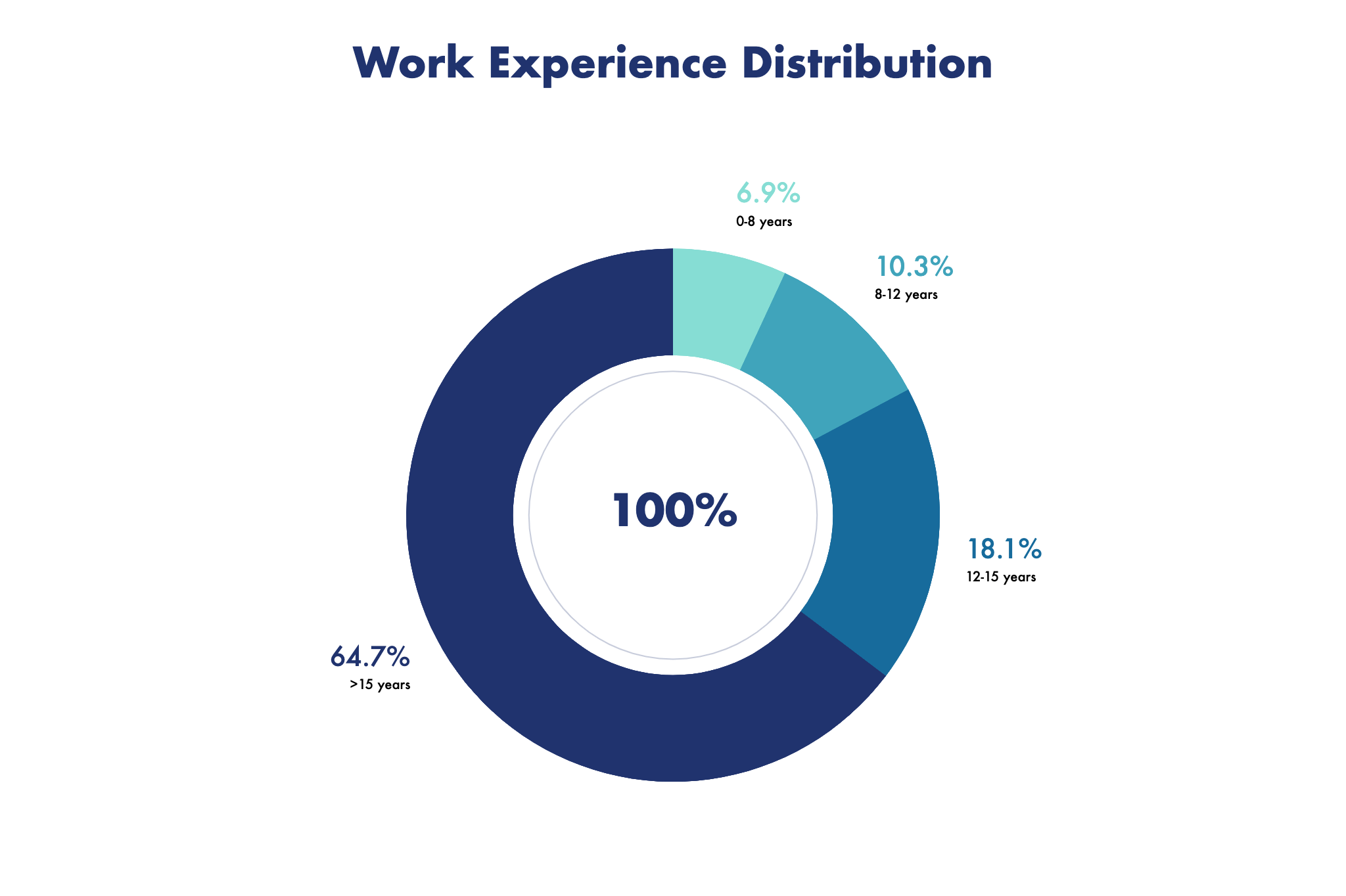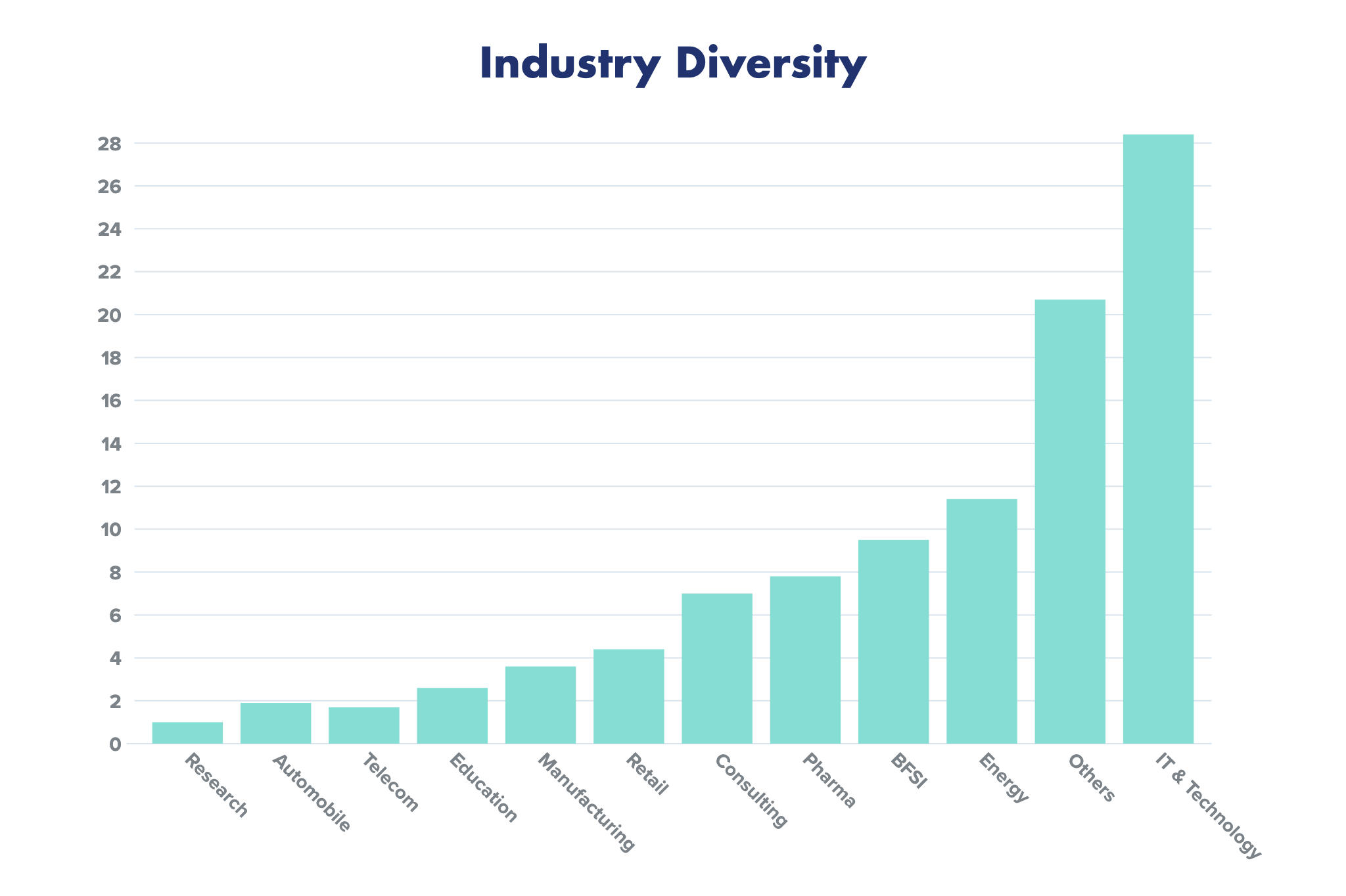Learn more about the course
Get details on syllabus, projects, tools, and more
Upskill Your Teams with Future-Ready Skills
Empower your workforce with programs from leading universities
-
Customized Learning Paths
Tailored to align with your organization's strategic objectives.
-
Team learning dashboard
Gain real-time visibility into your team's learning progress and outcomes.
-
Dedicated Program Support
Ensure program completion with personalized assistance and guidance.
Enter your organisation name
This will help us customise the proposal plans

PGP in Artificial Intelligence for Leaders
Learn skills that make you AI enabled business leader
Application closes 4th Dec 2025
What’s new in this online course?
-

Modules on Generative AI for NLP
Master generative AI for NLP, covering model design, fine-tuning, and real-world applications, with a focus on data, computation, and ethics.
-

No code prompt engineering modules
Learn prompt engineering without coding, focusing on crafting effective prompts for AI models. Explore techniques to optimize model outputs and solve problems across various applications

Program Outcomes
Master AI for business strategy without coding
Become a leader in AI & drive business growth
-
Gain strategic insights to manage and execute AI projects effectively
-
Explore AI’s transformative potential across diverse business scenarios
-
Build innovative AI-powered products and services to drive growth
-
Lead and collaborate with cross-functional teams for seamless AI integration
Earn a Postgraduate certificate from UT Austin
Key program highlights
Why choose the AI for leaders program
-

Learn from world’s top university
Earn a certificate from a world-renowned university, taught by the esteemed faculty of UT Austin
-

Industry-ready curriculum
The GenAI Modules empower business managers to leverage generative AI for innovation, strategic decisions, and driving organizational growth.
-

Learn at your convenience
Gain access to 200+ hours of content online, including lectures, assignments, and live webinars which you can access anytime, anywhere
-

4 hands-on projects
Work on projects alongside established AI leaders and fellow learners worldwide
-

Get expert mentorship
Interact with mentors who are experts in AI and get guidance to complete and showcase your projects
-

Personalized program support
Get 1:1 personal assistance from a Program Manager to complete your course with ease.
-

Dedicated career support
Get expert guidance to prepare for job roles with mock interviews, resume building, and e-portfolio review
-

No code approach
Leverage no-code tools to make better predictions and improve decision-making
Skills you will learn
AI Strategy Development
Generative AI Expertise
AI Project Estimation
POC Development
Machine Learning
Deep Learning
Build vs. Buy Decision-Making
Prompt Engineering
Strategic MLOps and LLMOps
Building and Scaling AI Teams
AI ROI Assessment
AI Ethics and Governance
AI-Driven Decision Making
AI Strategy Development
Generative AI Expertise
AI Project Estimation
POC Development
Machine Learning
Deep Learning
Build vs. Buy Decision-Making
Prompt Engineering
Strategic MLOps and LLMOps
Building and Scaling AI Teams
AI ROI Assessment
AI Ethics and Governance
AI-Driven Decision Making
view more
- Overview
- Career Transitions
- Learning Journey
- Curriculum
- Projects
- Certificate
- Faculty
- Reviews
- Career support
- Fees
- FAQ

This program is ideal for
The PG program in AI for Leaders empowers you to leverage Artificial Intelligence for strategic decision-making and business growth
View Batch Profile
-
Business leaders
Leverage the power of AI in building products and services to grow your business and make profit
-
Operations, delivery, & product managers
Launch new products in the market swiftly and successfully and boost customer experience
-
Entrepreneurs and Consultants
Build working prototypes for your business, without depending on large data teams
-
Working Professionals and Marketers
Lead AI and data-driven teams and build innovation initiatives using AI technologies
Experience a unique learning journey
Our pedagogy is designed to ensure career growth and transformation
-
Learn with self-paced videos
Learn critical concepts from video lectures by faculty & AI experts
-
Engage with your mentors
Clarify your doubts and gain practical skills during the weekend mentorship sessions
-
Work on hands-on projects
Work on projects to apply the concepts & tools learnt in the module
-
Get personalized assistance
Our dedicated program managers will support you whenever you need
Curriculum
Our curriculum has been carefully-crafted to provide you with the breadth and depth you need to make smarter business decisions, lead AI teams, and devise an AI strategy for your organization. Accordingly, it covers the most business-relevant technologies and diverse industry applications to turn you into an AI-empowered leader.
Pre-work
Here you will learn about the fascinating history of Data Science its industry applications and the underlying stats.
AI Essentials
Role of Data Science in Life, Evolution of Data Science, How Data Science helps in solving industry problems, Use cases of Data Science across the various functions, Overview of the process of building data-driven solution, Typical life cycle of Data Science
MODULE 1: THE BUSINESS OF AI
Delve into AI project development, assess business impact, and explore case studies illuminating AI applications and limitations. Create effective POC (Proof of Concept) plans, understand market dynamics, and utilize data for decision-making steering the business into the future of AI.
Understand the basics of AI and its rapid growth
Explore practical applications and limitations of AI in business
Engage in the step-by-step process of developing an AI project
Evaluate ROI, threats & opportunities
Develop a POC outline, evaluate solutions, and assess market potential
Create a roadmap for product development and expansion
MODULE 2: DATA MODELING
Develop skills in uncovering patterns and making informed, data-driven decisions. Explore Regression, including multivariate Linear Regression, and delve into classification using Logistic Regression. Gain practical insights for personalized solutions and unlock new possibilities within your data.
Understand data objects and visual metrics for data interpretation
Explore Data Visualization and manipulation using KNIME
Learn Machine Learning fundamentals and Regression techniques
Learn supervised learning regression techniques
Learn evaluation of regression model performance
Engage in case study sessions with experts to apply concepts
MODULE 3: MACHINE LEARNING AND DEEP LEARNING
Explore machine learning classification using Decision Trees, including CART and pruning techniques, and advance to Random Forests for more accurate guesses. Also, explore the building blocks of deep learning Neural Networks, and how they mimic human thinking for better decision-making. Learn to build, train, and optimize Neural Networks, correcting prediction errors.
Learn supervised classification techniques
Dive into decision trees and learn about pruning techniques
Understand ensemble techniques as a powerful tool in machine learning
Delve into classification model evaluation metrics precision, recall, F1 score, and accuracy
Gain foundational knowledge of neural networks
Explore techniques for optimizing neural networks
Solidify understanding of these concepts using case studies
MODULE 4: DISCOVERING PATTERNS IN DATA
Explore clustering to unveil hidden data patterns, mastering the grouping, scaling, and visualization of similar data points for strategic decisions. Dive into recommendation systems using content-based and collaborative filtering for anticipating customer preferences. Learn to leverage data for business growth and build effective systems.
Gain expertise in K-Means clustering, scaling, and visual analysis
Learn content-based and collaborative filtering
Understand similarity measures, and explore hybrid systems
Understand the real-world applications of clustering and reinforce knowledge
Understand ensemble techniques as a powerful tool in Machine Learning
Develop practical skills in applying clustering and recommendation systems
MODULE 5: GENERATIVE AI FOR LEADERS
Explore how Generative AI works, from understanding large language models to why they sometimes produce errors like hallucinations. You will also learn about various Prompt Engineering techniques and ways of writing effective prompts
Understand the fundamentals of Generative AI, its evolution, and business applications.
Learn the differences between discriminative and generative models.
Explore how LLMs process and predict text, including factors causing hallucinations.
Master prompt engineering techniques like zero-shot, few-shot, and chain-of-thought prompting.
Create reusable templates and optimize prompts for scalable solutions.
Understand the lifecycle of Generative AI, from training to deployment, including tokenization.
Leverage APIs to operationalize LLMs for business impact.
MODULE 6: BUILDING AI-FIRST ORGANISATION
Learn how to build high-performing cross-functional AI teams for different types of organizations. You will also learn how to build a generative AI strategy for the organization to build at scale GenAI solution for your organization.
Learn the differences in AI team dynamics between service and product companies.
Understand centralized vs. distributed AI team structures and their impact on outcomes.
Explore strategies to motivate AI teams and handle resistance from senior management effectively.
Develop skills to coach team members and manage diverse AI project portfolios.
Master techniques for scaling AI teams while maintaining efficiency and innovation.
Gain insights into crafting a Generative AI strategy tailored to your organization's needs.
Understand the role of data, infrastructure, and talent in implementing Generative AI.
Learn to define metrics and KPIs for measuring the success of Generative AI initiatives.
SELF-PACED MODULES
COMPUTER VISION
Concepts: Introduction to Computer Vision, Types of Computer Vision problems, Pixel, How does a computer see an image? 3D Images, Resolution, Image Transformations, Convolution, Pooling, Significance of Convolution & Pooling, Convolutional Neural Networks, Case studies
AI IN PRACTICE
Concepts: Applications of Transfer Learning, Dealing with Imbalanced Data: Data Augmentation, Model Deployment, Modes of Training, Serialization, Model Monitoring and Recalibration.
CAPSTONE PROJECT
The capstone project represents the culmination of candidates' learning, demonstrating mastery of AI techniques. As an AI-enabled business leader, the task is to analyze market opportunities, propose a business plan for an innovative AI product, and present a comprehensive plan including market analysis, product requirements (data & personnel), implementation roadmap, financial projections, and business impact assessment.
CERTIFICATE OF COMPLETION FROM THE UNIVERSITY OF TEXAS AT AUSTIN and 5.5 Continuing Education Units (CEUs)
Upon the successful completion of the course, candidates gain a certificate from the prestigious University of Texas at Austin.
Hands-on projects
Work on projects and implement your skills alongside established leaders and fellow learners from around the world
-
20+
case studies
-
1 team
Capstone project
-
4
real-world projects
Description
The project involves ideating an AI product and building its POC, including the problem statement, proposed solution, validation metrics, market analysis, and timelines for implementing the project.
Skills you will learn
- Market Analysis
- Building Roadmap
- AI Project Estimation
Description
The project involves building classification and regression models to redefine the loan approval and loan pricing strategy to minimize loss due to loan default for an auto finance company.
Skills you will learn
- Data Visualization
- Exploratory Data Analysis
- Linear Regression
Description
Build a classification model to predict the conversion of sales leads enabling the company to optimize resource allocation.
Skills you will learn
- Decision Trees
- Random Forest
- Model Evaluation
- Classification
Description
Identify the various segments of customers to expand its credit card customer base by targeting new customers and upselling to existing customers.
Skills you will learn
- K-Means Clustering
- Exploratory Data Analysis
- Data Preprocessing
- Cluster Profiling
Description
The project involves analyzing the customer review and using the prompt engineering technique in conjunction with the Generative AI model to categorize the articles, predict the sentiment, and generate a first response to the customer based on the sentiment of the review. This data-driven approach empowers businesses to enhance customer experiences, drive growth, and cultivate enduring relationships with their clientele in today's fast-paced business environment.
Skills you will learn
- Prompt Engineering
- Large Langauge Models
- Natural Language Processing
- Classification
Earn a Professional Certificate from UT Austin
Get a PG certificate from one of the top universities in USA and showcase it to your network

* Image for illustration only. Certificate subject to change.
Meet your faculty
Learn from the top, world-renowned faculty at UT Austin
Get dedicated career support
-
1:1 career sessions
Interact personally with industry professionals to get valuable insights and guidance
-
Interview preparation
Get an insiders perspective to understand what recruiters are looking for
-
Resume & Profile review
Get your resume and LinkedIn profile reviewed by our experts to highlight your AI & ML skills & projects
-
E-portfolio
Build an industry-ready portfolio to showcase your mastery of skills and tools
Course fees
The course fee is 3,100 USD
Invest in your career
-

Gain strategic insights to manage and execute AI projects effectively
-

Explore AI’s transformative potential across diverse business scenarios.
-

Build innovative AI-powered products and services to drive growth
-

Lead and collaborate with cross-functional teams for seamless AI integration.
-
discount available
3,100 USD 2,950 USD
Third Party Credit Facilitators
Check out different payment options with third party credit facility providers
*Subject to third party credit facility provider approval based on applicable regions & eligibility
Admission Process
Admissions close once the required number of participants enroll. Apply early to secure your spot
-

1. Fill application form
Apply by filling a simple online application form.
-

2. Interview Process
A panel from Great Learning will review your application to determine your fit for the program.
-

3. Join program
After a final review, you will receive an offer for a seat in the upcoming cohort of the program.
Course Eligibility
- Applicants should have a Bachelor's degree with a minimum of 50% aggregate marks or equivalent
Batch start date
-
Online · To be announced
Admissions Open
Frequently asked questions
What is the role of the University of Texas at Austin in the PG Program Artificial Intelligence for Leaders?
The PG Program in Artificial Intelligence for Leaders (PGP-AIFL) curriculum has been designed by the McCombs School of Business at the University of Texas at Austin. Award-winning faculty members from UT Austin and leading AI practitioners have developed the content and assessments for this program. All participants who successfully complete the program get a certificate from the University of Texas at Austin.
What is meant by “mentored learning sessions”?
Mentored learning sessions connect you directly with industry experts and practitioners in AI, Machine Learning, and Deep Learning through live virtual sessions. You will participate in small-group, weekend sessions to explore the practical application of concepts while obtaining industry context and solving challenging topics.
Will the content be available after the program is completed?
Yes, all learning materials—including lecture notes, online content, and supporting resources—will be available through the online platform for one year following the completion of the program.
How will I be evaluated during the program?
You will be evaluated through assessments, quizzes, attendance, and projects. All these methods allow tracking your progress towards achieving desired learning outcomes.
What are some of the key case studies covered in this program?
The program covers key case studies from industries like financial services, healthcare, retail, and e-commerce. Led by AI practitioners, these case studies explore real-world applications of AI. Learners gain practical insights into how AI is implemented to solve challenges across various sectors.
Will I receive a transcript or grade sheet after completion of the program?
No, the PGP-AIFL is an online professional certificate program offered by the McCombs School of Business at The University of Texas at Austin. As it is not a degree or full-time program, transcripts or grade sheets are not issued by the university. However, you will receive marks for each assessment to gauge your understanding and for each module to determine your eligibility for the certificate.
Upon successful completion of the program, including meeting all eligibility criteria, you will be awarded a certificate of completion by the McCombs School of Business at The University of Texas at Austin.
What is the required weekly time commitment?
Each week, the program requires approximately 2-3 hours of recorded lectures and a 2-hour live virtual class or industry mentor session on weekends, including hands-on practical applications and problem-solving. The program consists of 1 hour every week for practicing assessments and exercises. Depending on your background, you should dedicate 2 to 4 hours weekly to self-study and practice. You would need to commit approximately 8-10 hours per week to this program.
What is the eligibility for the program?
The PGP-AIFL is a hands-on program designed for senior professionals. Applicants should have a Bachelor's degree with a minimum of 50% aggregate marks or equivalent. The curriculum of the program is tailored for leaders aspiring to gain sufficient AI comprehension for informed decision-making. You should be able to understand and express yourself well in both written and spoken English to fully benefit from the program.
What is the admission process?
Admissions close once the required number of participants enroll. Apply early to secure your spot.
1. Fill out the application form
Apply by filling out a simple online application form.
2. Interview Process
Participate in a screening call with Great Learning to assess your program fit.
3. Join the program
Selected candidates will receive an offer letter. Secure your seat by paying the admission fee.
How can I apply for this program?
You can complete the online application form if you are interested in the program. For any help or support regarding the application process, please contact aifl.utaustin@mygreatlearning.com.
What are my payment options?
Candidates can pay the course fee through Bank Transfer orCredit/Debit Cards. There are also installment plans available.
For further details, please get in touch with us at aifl.utaustin@mygreatlearning.com
What is the refund policy?
1) A full refund will be issued only if the cancellation request is made within 48 hours of enrollment.
2) Admission Fee – The admission fee is non-refundable if cancellation is requested after 48 hours of enrollment.
3) For fees paid in addition to the admission fee:
Refund or dropout requests made more than 4 weeks before the commencement date are eligible for a full refund of the amount paid in addition to the admission fee.
Refund or dropout requests made more than 2 weeks before the commencement date are eligible for a 75% refund of the amount paid in addition to the admission fee.
Refund or dropout requests made more than 24 hours before the commencement date are eligible for a 50% refund of the amount paid in addition to the admission fee.
4) Requests received after the commencement date are not eligible for a refund.
5) Cancellation requests must be submitted in writing to the program office.
Batch Profile
The PGP-Artificial Intelligence for Leaders class represents a diverse mix of work experience, industries, and geographies of business leaders and managers - guaranteeing a truly global and eclectic learning experience.



PG Program in AI for Leaders
Artificial intelligence has progressively expanded its influence over enterprises worldwide, resulting in a steady demand for AI professionals. While the emphasis has been on the opportunities for trained professionals, their efforts must still be oriented towards competitive business results. Modern organizations should take advantage of the skills and expertise of emerging AI professionals to maximize productivity and achieve market leadership.
The Post Graduate Program in Artificial Intelligence for Leaders, designed by UT Austin in collaboration with Great Learning, is a four-month comprehensive online program for business leaders to leverage data and AI to make informed strategic business decisions. The course is intended for non-technical corporate executives who desire to employ AI to improve their routine decision-making and eventually become business leaders. It is also for product managers, directors, category managers, CXOs, delivery managers, senior managers, and team leaders looking to further their careers are among the pertinent profiles. The course emphasizes a theoretical and case-based approach that helps to simulate operational instances where AI can be used to enhance corporate goals.
AI for Business Leaders Course Highlights
You can be convinced that you are learning from world-class academia with a proven track record of significant accomplishments, innovative research, and instructional practices. Industry experts lead the program with trained data analysts to guarantee that you succeed and are prepared for employment right after completion.
Learning Format
Learn from the best academia and take part in mentored learning sessions from industry experts.
Learn from Case Studies
Understand various industry-relevant case studies and develop a comprehensive understanding of the business context.
Industry-relevant Projects
Learn and develop industry-relevant AI projects with no prior coding expertise. Evaluate your learning by working on various capstone projects.
Understand Artificial Intelligence
Acquire industry-ready knowledge and work with modern applications of Artificial intelligence. . Be future-ready by helping organizations unleash the potential of emerging technologies like artificial intelligence in management and key business areas.
Certificate from renowned University
Earn a certificate from The University of Texas at Austin upon completing the AI for Leaders program.
Program Design
This 4-month program is delivered through 4 industry and 8 mentored online sessions, 1 capstone, and 5 curriculum pertinent projects to help you acquire industry-ready skills.
It includes 5 modules covering AI through data, Supervised Learning, Neural Networks and Ensemble Techniques, Unsupervised Learning, Deep Learning (CV and NLP), and projects to help you get hands-on experience working with AI for management tasks.
Get the UT Austin’s Advantage of Learning AI for Business Leaders
With 51,000+ students and 3000+ world-class faculty members, the McCombs School of Business at the University of Texas at Austin is an esteemed business school and a renowned public research university. The University of Texas at Austin is distinguished as a leader in social science, business, technology, and science worldwide. Through top-notch instruction, hands-on learning, and the pursuit of vital, ground-breaking research, it fosters the development of ideas and breakthrough revolution in AI for business leaders. You may be assured that you benefit from top academicians and researchers with proven track records, innovative research, and creative teaching techniques.
The University of Texas at Austin is graded sixth overall in business analytics in the QS World University Rankings 2021. U.S. News & World Report has undeviatingly ranked the University among the top 20 public universities in the country owing to its 40+ postgraduate programs and 15 undergraduate programs that rank among the top universities. The University also offers AIML PG Program to those seeking to pursue an established career in the domain. (Explore AI ML PG Program)
Who is this program for?
The program is ideal for professionals seeking to secure a variety of positions driving AI, including Product Manager, Business Head, Delivery Manager, Account Manager, Team Lead, Engineering Manager, Data Science Consultant, Marketing Manager, and R&D Manager. The AI for leaders course is intended to teach corporate executives to use AI in manufacturing, providing services, or assisting clients. The curriculum will employ case studies and practical examples to equip you with industry-ready applications and use-cases. It will address fundamental ideas in machine learning and artificial intelligence, allowing learners to gain an intuitive understanding without being overly focused on complex technical specifics.
This intensive program will help business leaders to:
- Acquire adequate knowledge about AI to make informed decisions.
- Develop skills to define the scope and gain proficiency in managing AI projects.
- Promote revolutionary initiatives to clients and stakeholders and deliver AI project ideas to internal and external audiences.
- Lead technical teams throughout the AI project lifecycle.
- Make prudent choices while selecting tech stacks or products.
- Implement solutions through artificial intelligence in business management.
- Assist new businesses in creating AI-enabled products and services.



 Speak with our expert
Speak with our expert





























































